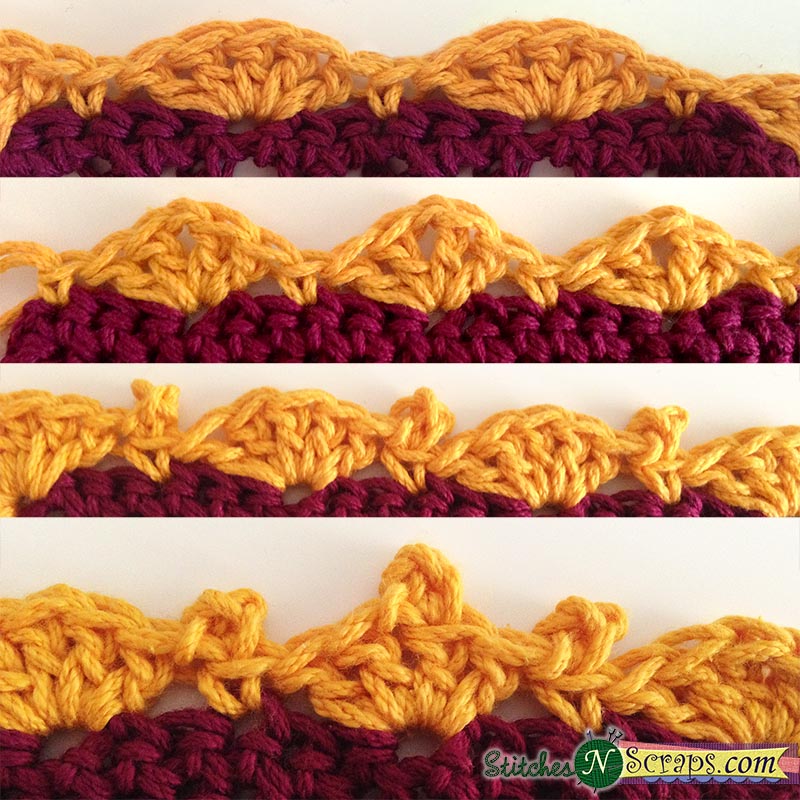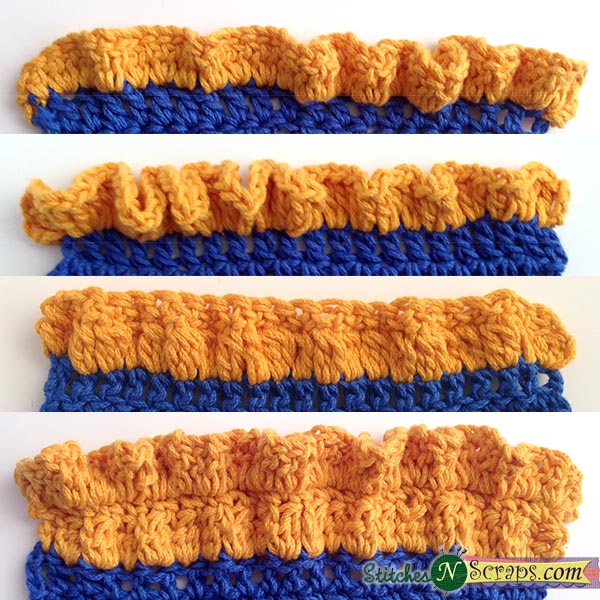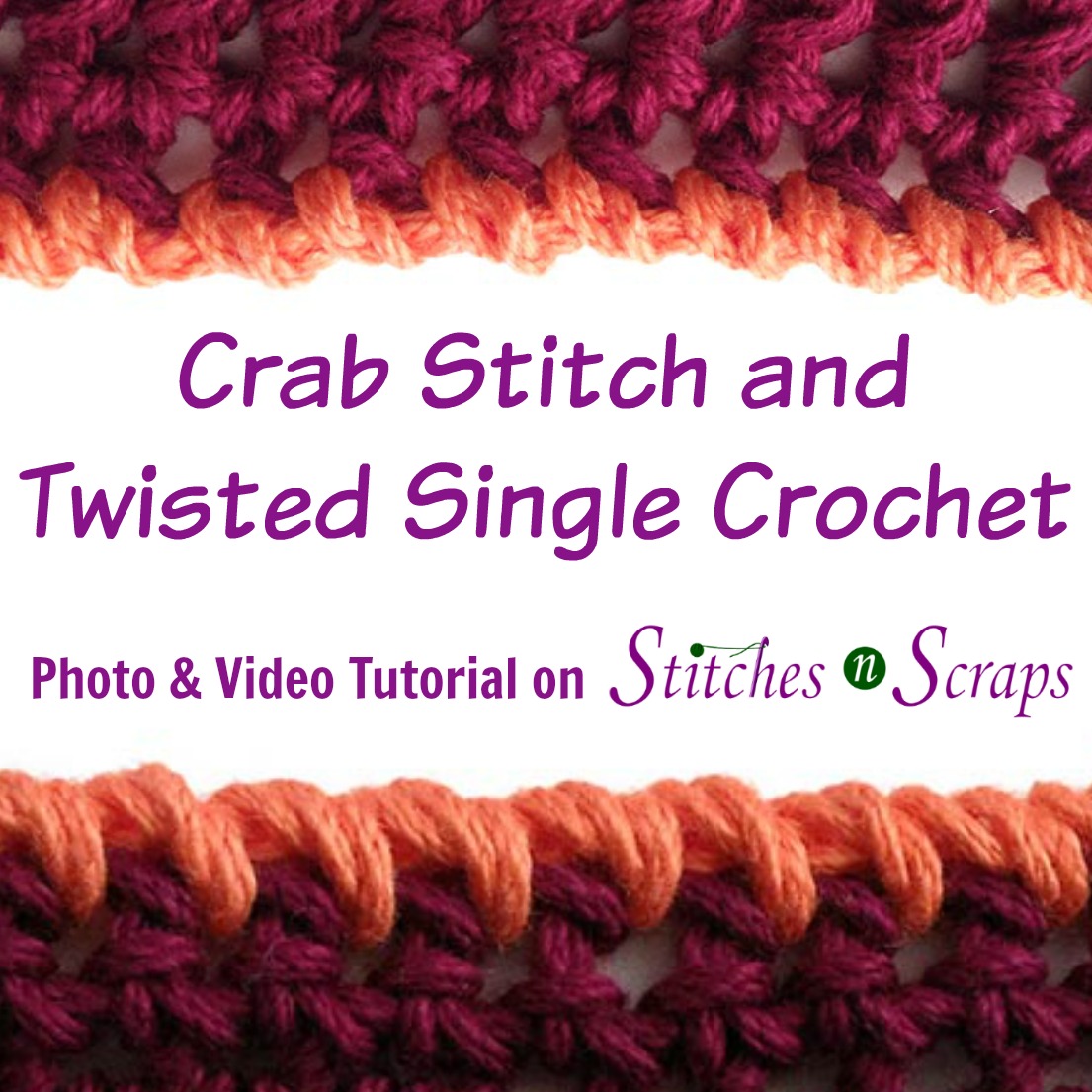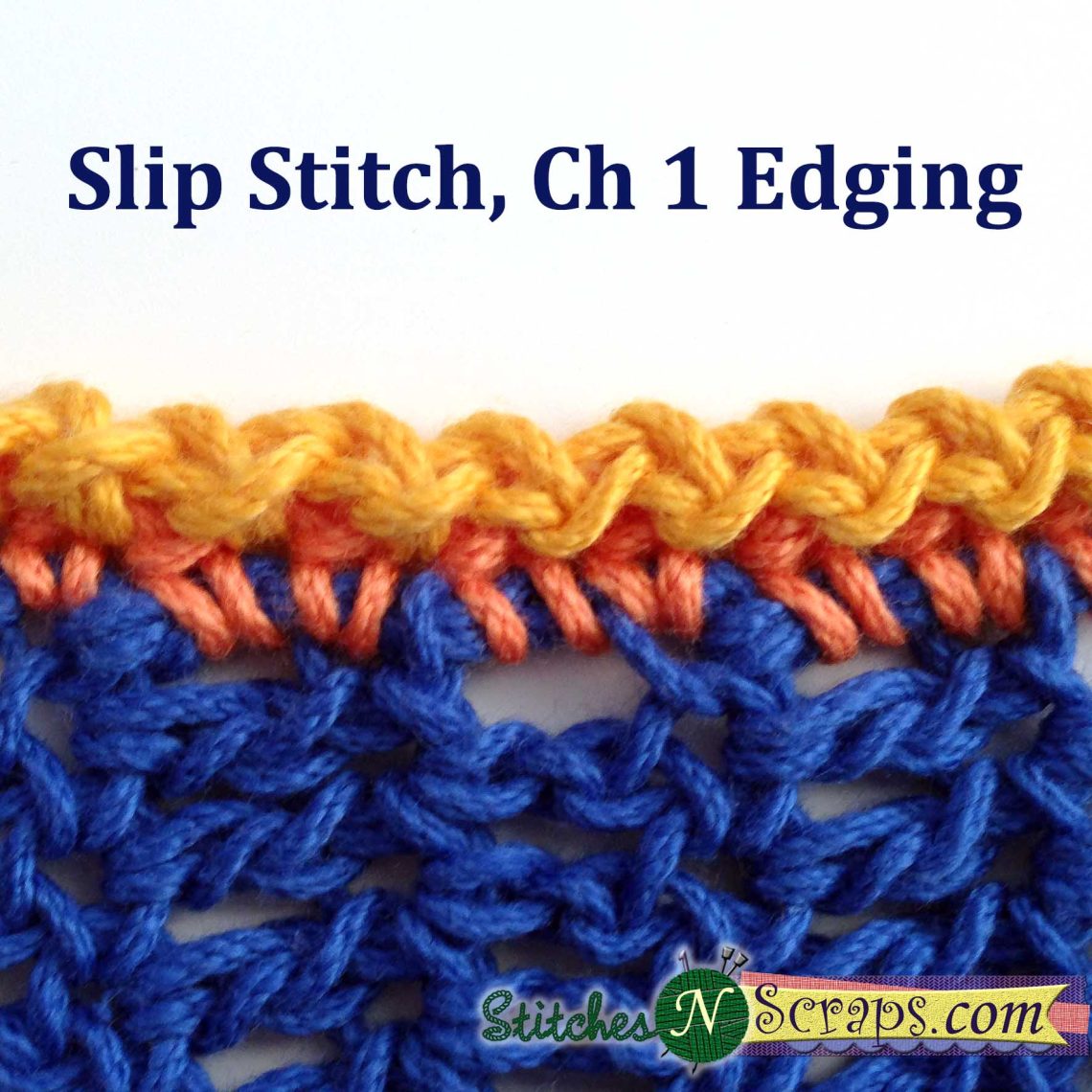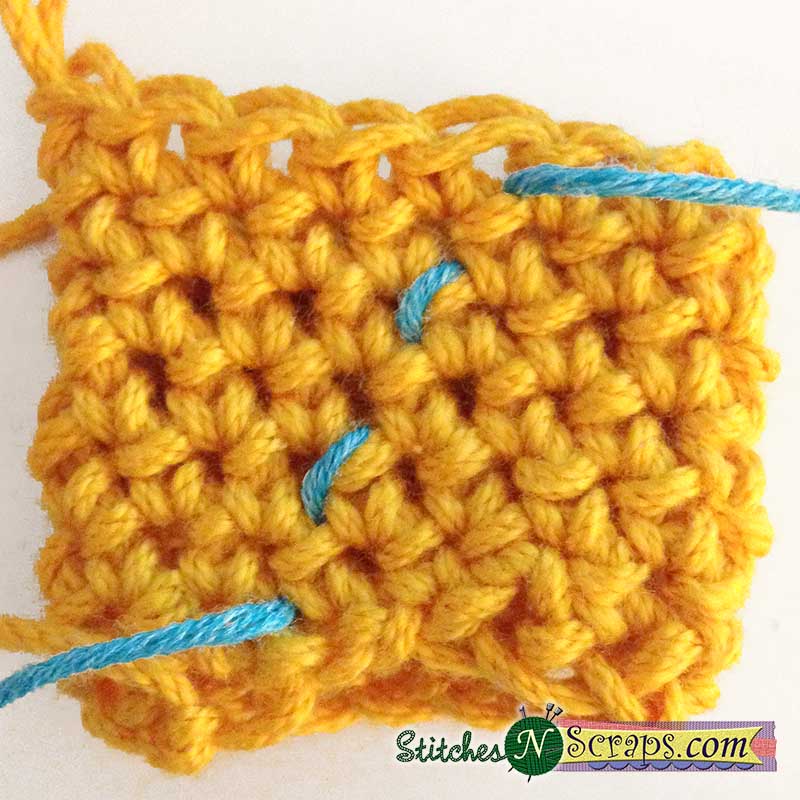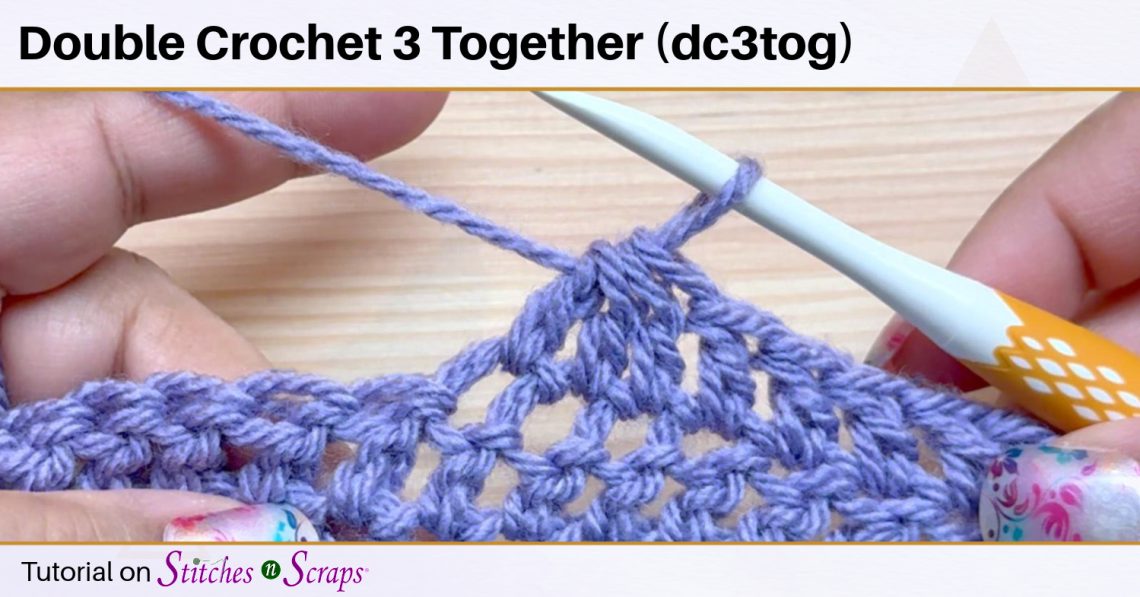Crochet Technique and Stitch Tutorials
Tutorials for crochet techniques and stitches, not entire patterns.
-
Edging – Shells and picots
Shells or fans are very popular for a decorative edging. If you get them spaced properly, they will lie flat and create a nice scalloped edge. Picots work well with shells too, and can add a little extra elegance and interest.
-
Edging – Ruffles
This week, let’s get frilly! Ruffles are a fun and versatile way to edge your projects. Almost any stitch pattern can become a ruffle. The key is to work extra stitches into every stitch. Simple DC Ruffles If you’ve seen my Anemone blanket, you’ve seen a basic double crochet ruffle. To make this edge, I just worked 2 dc in each stitch. This ruffle isn’t particularly full – since this is a baby blanket, I wanted something that wouldn’t catch on little crawling fingers and toes. You can make a ruffle as flat or as full as you want to, by adding more or fewer stitches. Here is a comparison…
-
Edging – Crab Stitch & Twisted SC
Crab stitch was one of the first decorative, single row edgings I learned. It creates a rope like edge by working backwards (from left to right). I recently learned a stitch called the twisted single crochet, which creates a very similar edge, but working forwards. Crab Stitch (Reverse Single Crochet) The instructions are simple – single crochet in each stitch, working from left to right. Actually doing it can be a bit awkward. For the first stitch, just make a single crochet as you normally would. Now without changing anything, insert your hook into the next stitch to the right (instead of to the left). The loop on your hook will naturally…
-
Edging – Slip Stitch Edgings
One very popular edging technique is the slip stitch edging. It’s easy to do and creates a nice, finished edge without adding a lot of bulk or length. By adding a chain between the stitches, you can get an entirely different, stretchier edging. Basic slip stitch edging For this edging, just slip stitch into every stitch.The slip stitches form a 2nd layer of V shapes along the edge, matching the V shapes already there on top of your last row of stitches. You can get 2 different effects, depending on the direction of your work. Here I have worked the yellow row of slip stitches in the same direction as the previous…
-
Edging – Working Evenly Across/Around
Many edgings start by working evenly across or around the edge of your project. To make this edge nice and even, you need to work the right number of stitches, and space them evenly. If your stitches are too close together, you’ll end up with a ruffled effect. If they are too far apart, it will pucker. When using a pattern, it should tell you how many stitches to work. It may even give you an idea of how to space them. If you’re doing your own thing though, or if you’ve made any adjustments to the pattern, you may need to calculate this for yourself. Calculating the number of stitches For squares,…
-
Tutorial – Why Continuous Rounds Shift
Yesterday, we looked at crocheting in continuous rounds and using a running stitch marker. The stitch marker shows clearly that the first stitch of the round shifts slightly to the right (or left, if you’re left handed) with each round. Why does this happen? Let’s look at the way the stitches are lined up in the middle of this swatch. If we look at the posts of the stitches (which in this case are the little V shapes, since this is single crochet), you will see that they don’t line up. In fact, each stitch sits in-between the two stitches below it. Looking at the current round, you can see how this works.…
-
Tutorial – Continuous rounds and running stitch markers
What are continuous rounds? Continuous rounds are a way to work in the round without ever joining or turning your work. When you finish one round, you simply continue working around again. There’s no slip stitch and no chain to start the next round, so there is no visible “seam”. Also, since you never turn, you will always be working on the right side of the fabric. These two characteristics make this an ideal technique for amigurumi, and it’s often used for things like hats and socks as well. Without a visible joining, it’s extremely important to mark the first stitch of each round. You can use a normal stitch marker and move…
-
Tutorial – Combining scraps
If you’re like me, you have a LOT of little bits of leftover yarn. They’re too small to make much of anything with, and too big to just throw away or cut up for stuffing. This particular box is mostly Red Heart Super Saver, with some other worsted weight yarns well, such as Red Heart Kids (discontinued), and Red Heart Soft. Many scrap projects rely on using small sections or motifs in each yarn, but that usually also means weaving in dozens of ends. So how can we work these up into something fun, without a nightmare finishing task? One way is by combining scraps together to make a jumbo yarn. Basically, you work with…
-
Double Crochet 3 Together (dc3tog)
Turn 3 stitches into 1 with the Double Crochet 3 Together (dc3tog) decrease! This standard double decrease starts with 3 partial double crochet stitches, and then finishes them all together as one.
-
Tutorial – Keeping your edges straight
When working in rows, do you ever have trouble knowing where the first or last stitch is? Are your “straight” edges really anything but straight? This is a common issue for new crocheters, and even happens to us oldies sometimes, when we’re learning a new technique. It’s easy to fix though, and all it takes is 2 locking stitch markers. This technique also helps you think about and understand how the stitches are actually being formed. If you have trouble finding the last stitch of the row, mark the first stitch of the previous row. Here’s a swatch of plain single crochet, where I’m at the start of a new row.…


